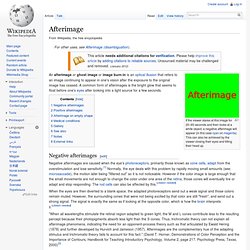

Critique of Urban Geography (Debord) Of all the affairs we participate in, with or without interest, the groping quest for a new way of life is the only thing that remains really exciting.

Aesthetic and other disciplines have proved glaringly inadequate in this regard and merit the greatest indifference. We should therefore delineate some provisional terrains of observation, including the observation of certain processes of chance and predictability in the streets. The word psychogeography, suggested by an illiterate Kabyle as a general term for the phenomena a few of us were investigating around the summer of 1953, is not too inappropriate. It is not inconsistent with the materialist perspective that sees life and thought as conditioned by objective nature.
Geography, for example, deals with the determinant action of general natural forces, such as soil composition or climatic conditions, on the economic structures of a society, and thus on the corresponding conception that such a society can have of the world. 1. 2. 3. Danm.ucsc.edu/~dustin/library/de certeau, the practice of everyday life.pdf. Steven Pinker: On Free Will. 3.3 The Problem of Induction. Martha Nussbaum on Aristotle: Section 2. Afterimage. If the viewer stares at this image for 20–60 seconds and then looks at a white object, a negative afterimage will appear (in this case cyan on magenta).

This can also be achieved by the viewer closing their eyes and tilting their head up. An afterimage or ghost image or image burn-in is an optical illusion that refers to an image continuing to appear in one's vision after the exposure to the original image has ceased. A common form of afterimages is the bright glow that seems to float before one's eyes after looking into a light source for a few seconds. Negative afterimages[edit] Negative afterimages are caused when the eye's photoreceptors, primarily those known as cone cells, adapt from the overstimulation and lose sensitivity.[1] Normally, the eye deals with this problem by rapidly moving small amounts (see: microsaccade), the motion later being "filtered out" so it is not noticeable.
Ewald Hering explained how the brain sees afterimages, in terms of three pairs of primary colors. Μετείκασμα - Βικιλεξικό. Color Scheme Designer 3. Television Image and Political Space in the Light of the Romanian Revolution. Richard Feynman - The Pleasure Of Finding Things Out. Daniel Kahneman: The riddle of experience vs. memory. Ge Wang: New Expressive Social Mediums on the iPhone.
Bio Ge Wang Ge Wang received his B.S. in Computer Science in 2000 from Duke University, PhD in Computer Science (advisor Perry Cook) in 2008 from Princeton University, and is currently an assistant professor at Stanford University in the Center for Computer Research in Music and Acoustics (CCRMA).

His research interests include interactive software systems (of all sizes) for computer music, programming languages, sound synthesis and analysis, new performance ensembles (e.g., laptop orchestra and mobile phone orchestra) and paradigms (e.g., live coding), mobile music, music information retrieval, visualization, interfaces for human-computer interaction, interactive audio over networks, and methodologies for education at the intersection of computer science and music. He is the chief architect and co-creator of the ChucK audio programming language, and the Audicle environment. Additionally, he is the Co-founder, CTO, and Chief Creative Officer of Smule (a.k.a. Daniel Kahneman: The riddle of experience vs. memory.